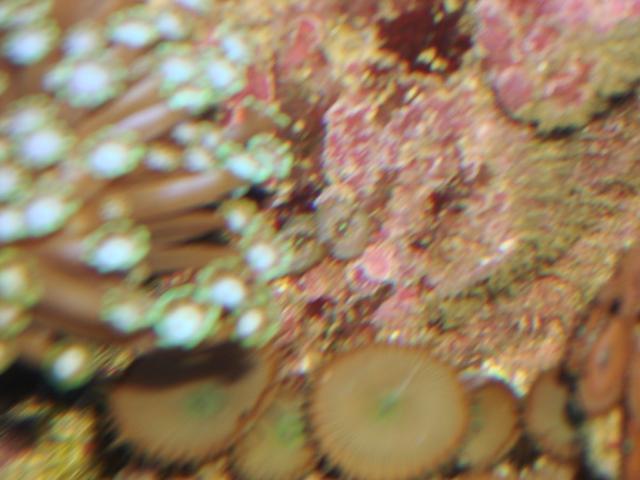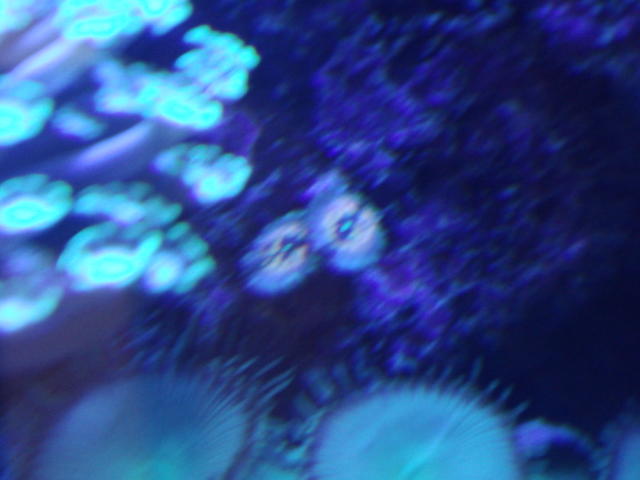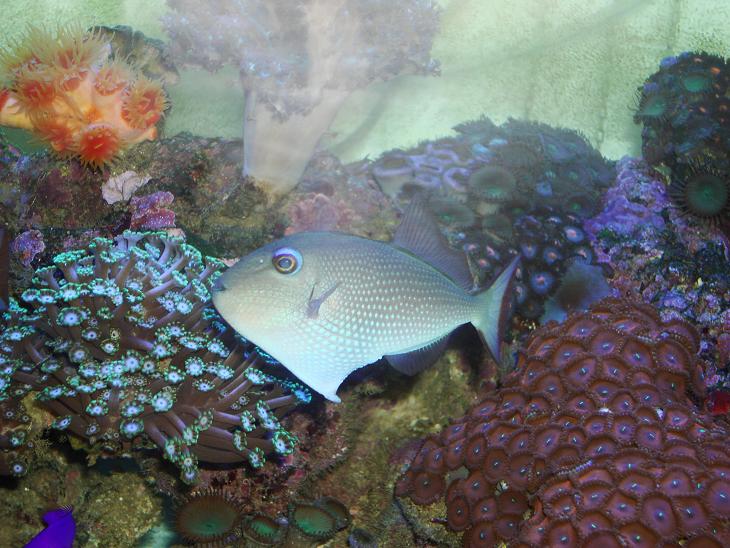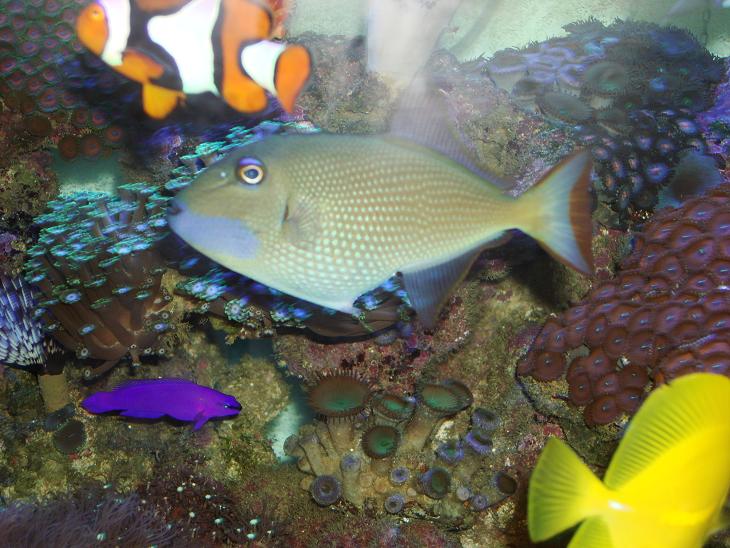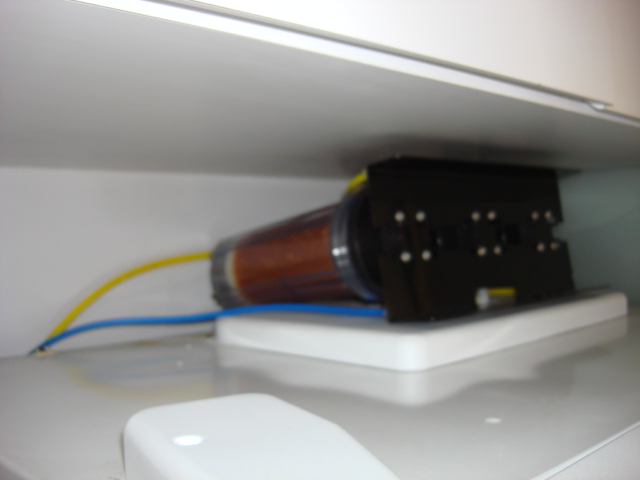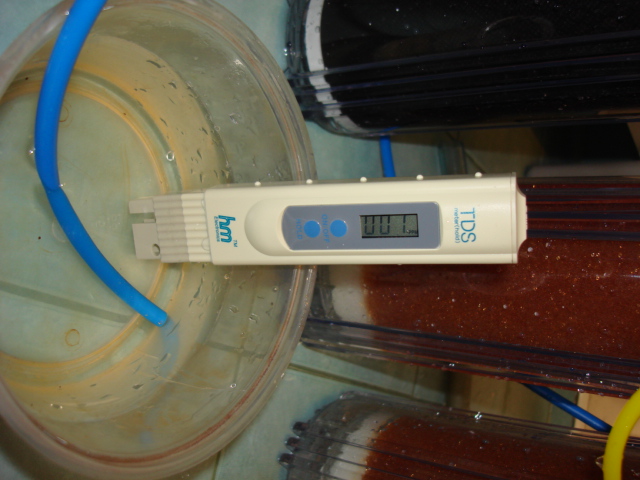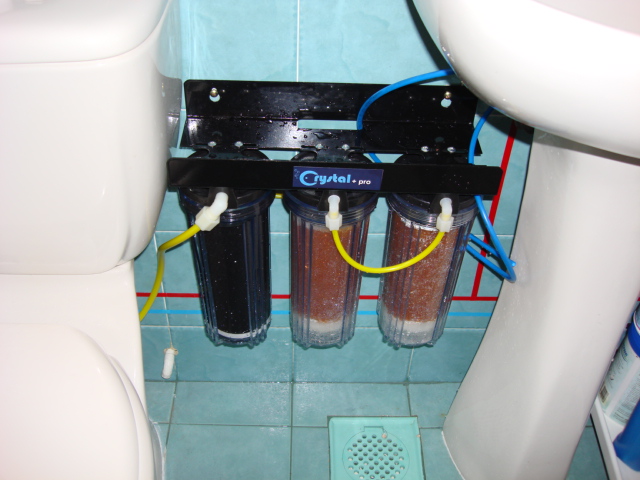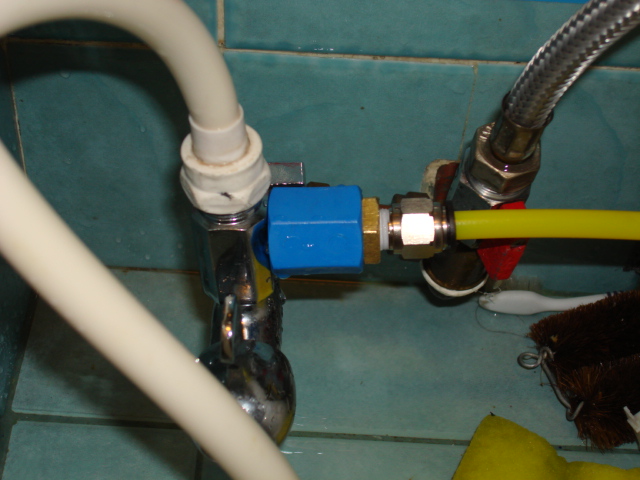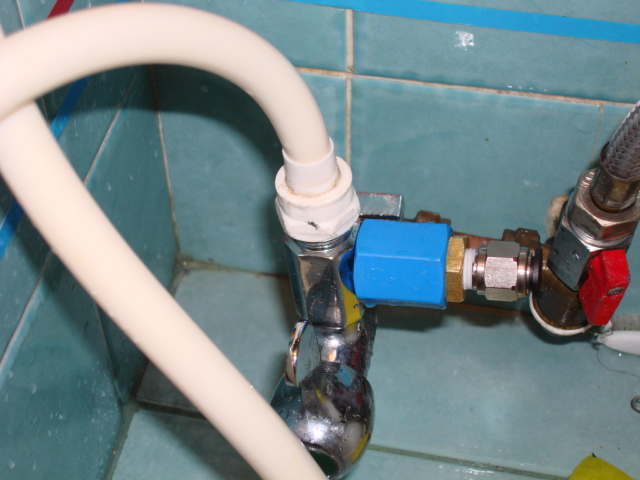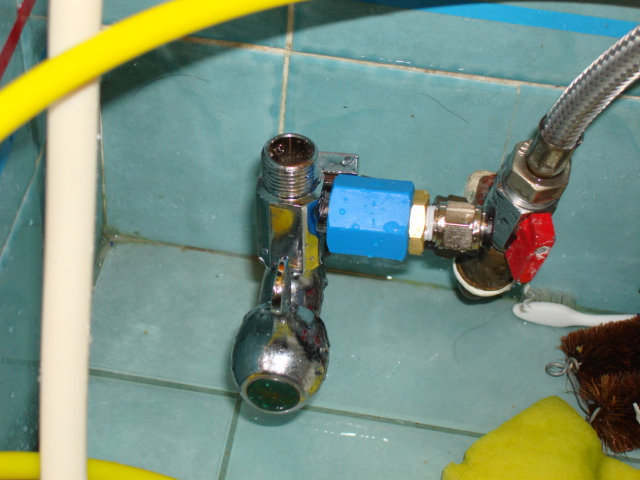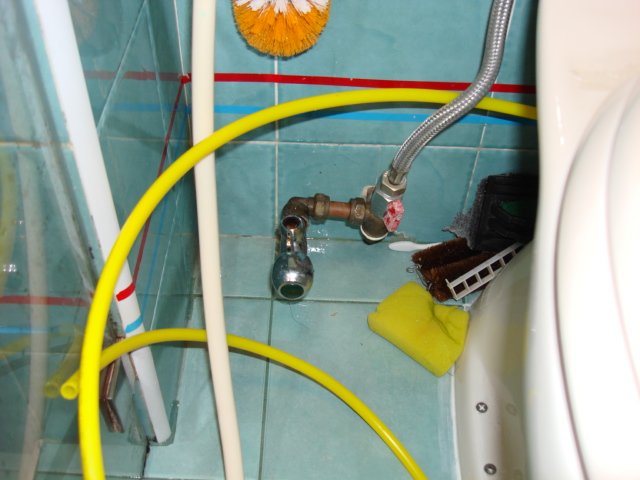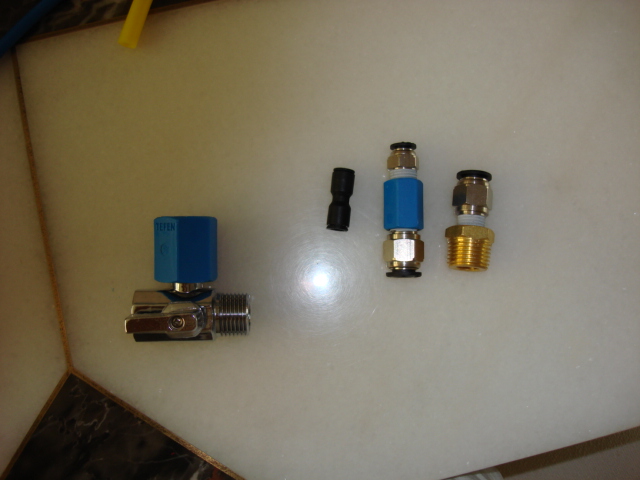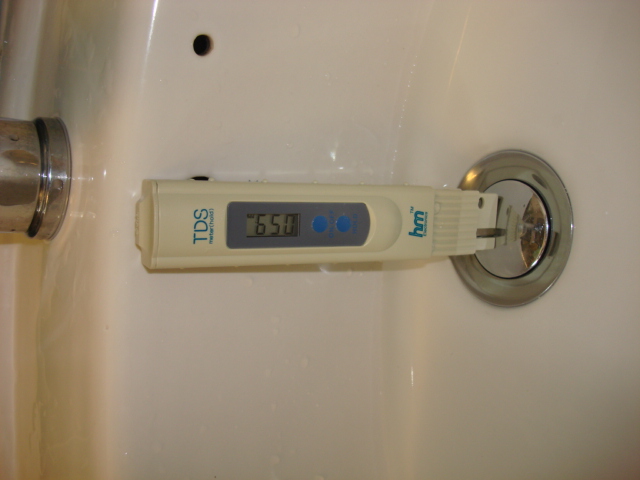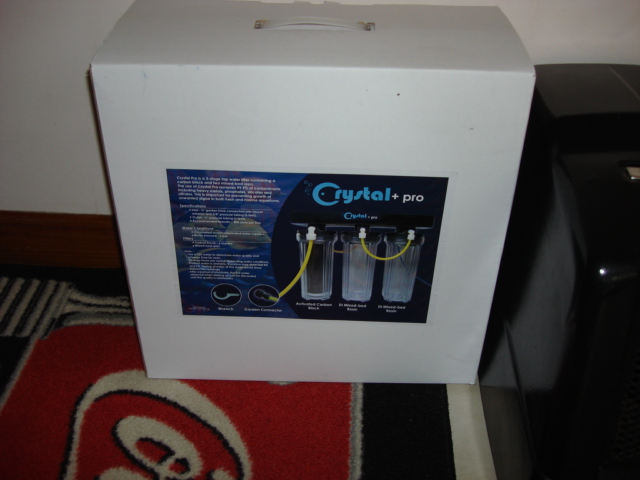-
Posts
489 -
Joined
-
Last visited
-
Days Won
1
Content Type
Profiles
Forums
Gallery
Everything posted by gunzo
-
-
Hopefully you can see it .. grew out of the rocks .. only 2 polyps Normal brown skirts ..dark brown center speckled with green and a luminous green mouth ..
-
up for Sunday
-
-
-
-
$20 from the crystal pro supplier direct .. simple unplug and replug device ..
-
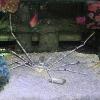
CopperBand BUtterFish
gunzo replied to searching4dan's topic in Disease treatment/parasite/pest control
here's something .. artipods from AM works quite well too .. make sure it's being target fed .. coz it's slower and slightly cockeyed .. my triggers and tangs are always faster than it .. -
In case you've never used or buy water before .. part of the filter process includes deionisation .. No one is promoting it because nobody mentions about it .. check out the methods of getting pure water .. it includes deionisation .. BTW when you mention RO and mineral source .. you really don't know how RO works do you ?? (no offense here) Never said he's wrong .. neither is he right too .. Yes .. and no you just have to make sure the nylon tubing is pushed all the way in .. if the seal is not complete you'll get leaks at the connector I'll let you know whether I'm dying or not if that's the case FYI, DI water tastes slightly sweet ..hmm maybe because it pulls ions out of my mouth to make it sweet ?? other than that .. nothing different .. Read my reply to clintcar .. he has done his job..
-
half truths are worst than lies.. partial info is worst than no info.. you intent is understood ..your attempt at enlightening is not.. you could have posted the link and let people read OR posted the thread in its entirety.. yet you chose to post what you want people to read.. I appreciate your intent .. but I don't like the way you did it..
-
Thanks for the info .. it will help you alot to post the rest of the replies instead of just what you want people to see .. here it is for the subsequent replies to this : I think this should help dispel the doubts you have .. BTW .. the original poster was dated 2003 .. these are current I am in this field of Manufacturing Demineralized (deionized) water for the last ten years. To my knowledge there isn't hard evidence about drinking deionized is good or bad. All I can say accidental consumption of small quantities has not caused any visible harm. Anand Jayaraj - Chennai, Tamilnadu, India Here is what JT Baker's MSDS on HPLC grade water has to say: Potential Health Effects ---------------------------------- Water is non-hazardous. Inhalation: Not applicable. Ingestion: Not applicable. Skin Contact: Not applicable. Eye Contact: Not applicable. Chronic Exposure: Not applicable. Aggravation of Pre-existing Conditions: Not applicable. Joe Pons - Greenville, SC am a International Bottled Water Association Certified Plant Operater. We deal only in purified water. We use water softeners, carbon filters, reverse osmosis systems, mixed-bed deionizers and ozonators to produce very high quality water for human consumption. We have been doing so for the last thirteen years with not only the blessing of the Internatioal Bottled Water Association but also the National Sanitary Foundation, the Food and Drug Administration and the state health dept. All of whom inspect our plant at least yearly. The purified water we produce is also tested for purity by NTL every year. We produce and sell and drink purified water for a very simple reason. Once purified water is exposed to air, like in a five gallon bottle, its aggressiveness is greatly reduced. However, if the water is produced correctly and the bottling is done according to accepted practices, the likelyhood of recontamination of the water by bacteria or pollutants is extremely low. Therefore, purified bottled water is the safest water there is to drink. If you wish to leach minerals from your body, drink carbonated colas. We used to use them to clean boiler tanks. Red Barber - Twin Falls, Idaho, United States August 8, 2006 I am absolutely baffled and dumbfounded by some of the information that people have posted here! Unless I have passed to the other side and am totally unaware of it, DI water is about the best tasting thing on the planet. I am an avid athlete - yoga, pilates, half marathoner, weight lifter, etc - and have been drinking about a half gallon to a gallon of it for over six years now. Did I mention that I am a vegetarian as well?? Guess what? I get flagged for low cholesterol levels and my bloodwork always comes back exemplary. If I do not have DI water with me when I am out, the closet thing to it with regards to taste is Aquafina or Dasani. All of our employees drink and have done so for years, with no side effects. Mehling Gilbert - Sunshine Ranches, FL, USA OH NO (screams of pain and anguish). My wife gave me a glass of totally pure water and my stomach is going to bleed and my cells explode, if only she had given me the polluted stuff I would be OK. Hang on a second I am just checking to see if these posts were on April 1st. I have wiped the tears from my eyes and the hysterical laughter has subsided so let me continue. The responses predicting dire consequences are absolutely correct. Osmotic shock is a real phenomenon and it will lyse cells (yup they will explode. OK OK they gently break apart without any earth shattering detonation). What you were not told is that tap water will do EXACTLY the same thing. On the face of it one could conclude that drinking beer is safer than drinking water but my wife still wont buy that one. Now for the rest of the story. The difference between the osmotic pressure of blood and tap water, de-ionized water and distilled water are almost identical. All three will lyse cells to the same degree. If you want to drink tap water, de-ionized water or distilled water then go ahead. The thing you should not do is inject any of them into your bloodstream. That would be bad. In hospital, when they give you fluid intravenously, they give you normal saline. That is salty water that has had its osmotic pressure adjusted to match blood. While normal saline is safe and will not cause your blood to explode or your stomach to bleed it makes a terrible cup of tea. By the way, I have been working with blood, blood products and designing haemodialysis, plasmaphoresis and tissue culture machines for 26 years and have drunk hundreds of gallons of de-ionized water in that time. De-ionized (DI) water is water in which the ions have been removed. (Ions are simply dissolved chemicals that have an electrical charge) You can remove the ions in a number of ways. You can do it by using anion and cation exchange resins in a variety of configurations. In the best cases this will give you 17 megohm water which is very pure. Distillation will do the exact same thing. And the third commonly used technique is dual reverse osmosis (RO) which can also give you ultra pure water. The little machines you see at the supermarket where you can fill up a jug with pure water use single reverse osmosis and what you are buying is city water that has been de-ionized (well, sort of de-ionized, they remove 95% of the ions). There is not a lot of difference between them except that anion and cation exchange resins may not remove any colloidal silica that may have been in the feed water. Under some conditions you can get a build up of silica which is almost impossible to remove. At the other end of the scale distilled water does not have any colloidal silica and is bacteriologically pure as well (which is not necessarily true with RO water or DI water). Frankly, it does not matter, at all, which of the three you choose your laser will work fine. As for the expiration date which seems silly but isn't. DI water is very low in ions and as Tom Baker pointed out it is hungry for ions. In time it will leach ions from the container so it is less de-ionized as time goes on. In reagent grade chemistry it may inerfere with the result of a subtle and sensitive experiment but in your case, no problem. Hope your YAG keeps cranking out the coherent photons for years to come. John Holroyd Enerquip Electro-Polish - Elkhorn, WI -------------------------------------------------------------------------------- Distilled water is the least expensive and most readily available coolant for this application. The primer: most potable tap water has minerals and gasses dissolved within, from metal carbonates and halogens, to traces of other compounds and a few organic contaminants. Carbonates have a fairly narrow range of solubility in water with respect to temperature, and as you cool the water close to and below freezing or heat the water over 100 degrees, the dissolved carbonates tend to precipitate out of solution as scale. Scale buildup in plumbing or cooling systems is undesireable because it reduces water flow in the system and also insulates the heat-exchange capabilities of a cooling/heating system. Most other contaminants are not particularly troublesome in cooling systems, as scaling does not generally occur. It just happens that carbonate scale is not readily soluble in water. Water can be treated to reduce the carbonates in water to prevent scaling. One method is to employ very strong magnets on the feed water. This is a controversial treatment, which is said to modify the carbonate component to somehow deposit as aragonite as opposed to the calcite structure of typical scale; the theory is based on the fact aragonite has a somewhat more soluble range in water than calcite, hence, there should be less scaling. As a materials scientist I am fundamentally skeptical of this process but in all honesty I did place some of these on a large evaporative cooling process; although there was a normal amount of precipitated minerals in the system, the minerals did not seem to scale on the ID of the system. Go figure. Softening the water is a process of ion-exchange, where the calcium and magnesium components of the scale minerals are replaced by sodium or potassium. The net effect is markedly reduced scaling in a system because sodium and potassium carbonates are very soluble in water over a wide range of temperatures and pH; these chemicals do not come out of solution and if they did, they would redissolve. Soluble chemicals=no scale. There is usually no problem with softened water in a closed cooling or heating system, but in an evaporative cooling situation there is still the issue of minerals being concentrated in the water from evaporative loss of the water. Softened water is usually completely a safe alternative for heat exchange, but with a 200,000 dollar laser system, I might be more apt to use the next method, distillation. Distllation is used to remove all of the dissolved solids from a water. The water is made into a vapor using heat or reduced pressure (or both) over the feed water, and the vapor is condensed into a distilled water. Non volatile components of the water, i.e. scale minaerals, are left behind. The end product will likely still have all of the volatile and most of the organic components of the feed water, and depending of the process, there may still be a few traces of dissolved solids. The total dissolved solids in distilled water are probably less than 50 parts per million and should be less than 10 ppm. The dissolved gasses and trace contaminants will likely have a small ionic component and the dissolved gasses will probably affect the pH of the water slightly. Whereas softened water will not corrode most metals, there is a possibility distilled water will corrode metals and frequently does. Distilled water is a notorious solvent for stainless steel welds. In a close! d cooling or heat exchange system, a few minerals are frequenty added to reduce the potential for corrosion, and sodium carbonate is a candidate. Distilled water is as inexpensive as bottled water and is just as available. If you need more than a few gallons, call your local water bottler & arrange for a tanker truck to make a delivery. If it was ~my~ laser system, I would use distilled water with a bit of electrolyte for corrosion inhibition. Deionized water is usually distilled water that is run over a bed of styrene plastic beads with various ion-exchange materials bonded to them. The ions in the water are adsorbed and bonded to the surface of the ion-exchange resin in the beds of beads; the resulting post-treatment water will have most of if not practically all of the ionic load removed. The net effect is very pure water. One caveat here is the dissolved solids which are not ionic will likely remain in the solution, as well as dissolved organics. Also, the ion-exchange beds are relatively expensive and have a finite capacity for ionic exchange which decreases arithmetically during use. DI water tends to be agressive toward some metals, but the price of DI water usually places it out of the range of machine cooling. There are some procedures which DI is perfectly suited for, but not for making process water. In the chemistry and analysis industry, distilled+ deionized water is often treated with carbon and other adsorbent materials to make ultrapure water with is then vacuum degassed. Ultrapure water must be stored in nickel or tin oxide, sealed tightly against the atmosphere. It is very difficult to work with. Medical water is often distilled and deionized water with is then ozonated to remove pyrogens. Another method of removing scale potential is reverse osmosis. Reverse osmosis is effectively using a very small-pored filter for the water; the pores in the membranes are tiny can actually filter out molecules. However, to effectively remove ionic components the water must be pretreated to flocculate scaling materials before treatment. R.O. is probably best used as a drinking water ultrafiltration process, in combination with other treatments. As for the relative potability of the pure waters, the difference in waters is very small. There is no adverse health affect from drinking distilled or deionized water. Deionized water tastes kind of bland & somewhat insipid, and distilled water has no taste at all. Some people get used to these qualities & drink them all the time. In either case, the taste is improved by aeration--if you shake the pure waters up with some air, the taste improves. The taste of any given water is largely imparted by the various mineral components; many of the drinking waters on the market today are, in fact, purified tap water to which minerals have been added (Avalon, etc). By law, drinking waters can not have more than 1000 parts per million of dissolved solids, so when you get down to the analysis of most available waters, there really isn't much difference between tap water, mineral water, or purified waters (no nutritional difference -->at all<-- between any of them!) As far as the health issue is concerned, it is true, water is hypotonic to cells & will destroy them. However, tap water is also hypotonic to cells. Your skin & stomach & intestinal linings are perfectly suited for thriving in and processing water. If you were to inject water into your blood, cells would die. If you cut your skin & wash the wound, the exposed cells do die. Fortunately, the fats that lyse out of the exposed wound quickly makes the wound less susceptable to water damage. Any ulrapure water you drink will quickly dissolve some saliva from your mouth--as soon as it has dissolved few parts per million of any substance, it is no longer ultrapure anyway. If it is a concern & all you have to drink is ultrapure water, you can stir the water with a metal stainless spoon or your finger first & it will magically transform itself from ultrapure water to just water. So, in conclusion, to cool the laser, filtered and softened water would probably work, but I would used treated/ distilled for an expensive toy like a laser. Dale Woika Surface Conversion Sciences - Bellefonte, PA, US
-
Finally .. what's good for the fish .. is definitely good for ME !!! :lol: Unit installed above my fridge .. water measured from the fridge is 47 on the TDS .. slightly lower than tap water ..
-
-
-
-
This is where I put my 3 way adaptor.. Just unscrew the hose from the tap .. and install the 3 way adaptor
-
Adaptors required to make it fit into our normal household taps 3 way connector (bought from Home Fix) 1/2" adaptor instead of the garden hose adaptor The other 2 fittings are for my drinking water
-
-
-
Just bought a couple of this things .. Was thinking why waste the good water for fishes ?? Anyway .. I find the original unit abit unfriendly for people staying in apartments .. so stay tuned .. I'm going to get a couple of attachments and make it a simple install for the lowest common denominator Post this here since I'll do a live guinea pig review of how the water taste and at the same time include abit on the install part .. anyway.. initial test with the TDS and nitrate from the tap in my area TDS from tap - 57 Drinking tap - 46 Nitrate = 10ppm salifert (20ppm Tropic Marine)
-
can try Iaquatics, made with acryllic ..
-
Some interesting observations for people who intends to keep this weed .. I've tried 2 separate occasions and failed .. 2nd time .. because I have a bleached detached yuma needing a rock .. I used the died out turtle weed rock as a base and put in my sump with low light and almost zero flow .. well .. my yuma melted .. but the turtle week grew back .. as in it is flourishing .. in my sump now ?!! Here's a couple of difference I see from the main tank .. low lighting low flow no fish nibbling on the rocks .. temperature around 27.5 degrees C .. you guys are welcome to feedback if this is how the turtle weed grass has survived in your tank ..
-
upz


